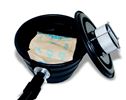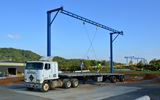
By Linda J. Sherrard
Safety is no longer "in the rear view mirror chasing upper management objectives." We are now leaders of the merged upper management team that runs the company.

By Paul R. Miller
Companies should work directly with an industrial vacuum supplier to assess facilities' needs and goals.
By Garrett Genest
Person-worn safety monitoring devices ensure that no emergency incident is ever left undiscovered.
By Jerry Laws
ANSI Z359.7-2011 took effect on Oct. 3, 2012. It applies to all products within the Z359 Fall Protection Code.
By Thomas Kramer
This is key: Once the right risk assessment data is collected, it should be used to implement a long-term fall protection abatement program.

By Kevin Duhamel
Once a company determines the need for a fall protection system, there are four options to evaluate: eliminate, prevent, restrain, and arrest.
By Marisa L. Kreider, Amanda M. Burns, Gretchen H. DeRose, Julie M. Panko
There are currently no legally enforceable occupational exposure limits and very few recommended limits for nanoscale forms of most materials.
By Fred Elliott
The starting point when selecting protective footwear is a Job Safety Analysis to understand the hazards that are present in a given workplace.
By Robert Pater
Bemoaning what's happened is a waste of energy, but what's even worse is continuing to stay stuck in mindsets that have topped out.
By
A successful process needs a team representing the interests of the population to make the important decisions of improving process and safety.
By Jerry Laws
Send an email telling me why you appreciate this issue and/or where it fell short, and also how we can make it better next year.